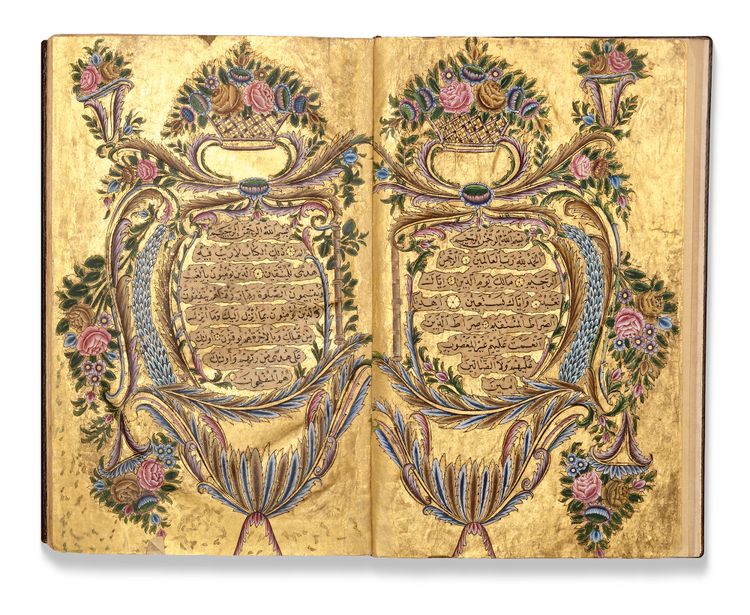Lot 28 AN ILLUMINATED OTTOMAN QURAN SIGNED BY HAFIZ IBRAHIM HULUSI, TURKEY, DATED 1266 AH/1849 AD
A complete Quran, Arabic manuscript on cream paper, each page with 15 lines, written in black naskh script within gold and polychrome rules, gold roundel verse markers with polychrome dots. Surah headings with gold decoration, gold and polychrome marginal motifs indicating the 'Juz'. Two opening biofolia heavily gilt with rococo-style polychrome decoration framing 7 lines of black naskh in clouds reserved against a sprinkled gold ground.
The last two pages with a prayer for completion of the recitation of the Quran (Dua'a al-khatm) and signed ''Hafiz Ibrahim Hulusi Bin Ahmed Reşîd Berberzâde, student of Halîl Şükrî, dated 1266 AH''.
In brown morocco binding with flap decorated with gold painted central medallion and border.
12 by 18 cm.
Calligrapher:
Berberzâde İbrahim Hulûsî Efendi, the son of the calligrapher Berberzâde Ahmed Reşîd Efendi, was born in Bursa. He initially studied calligraphy under his father and received his ijazah (diploma). Upon moving to Istanbul, he continued his studies to master the art under Bursalı Halîl Şükrî Efendi. A Quran manuscript dated 1257AH / 184AD has been seen, indicating that he was a skilled calligrapher who made a living from his art, which makes this Quran very rare and unique. However, there is no available information about his life story, date of death, or burial place.





